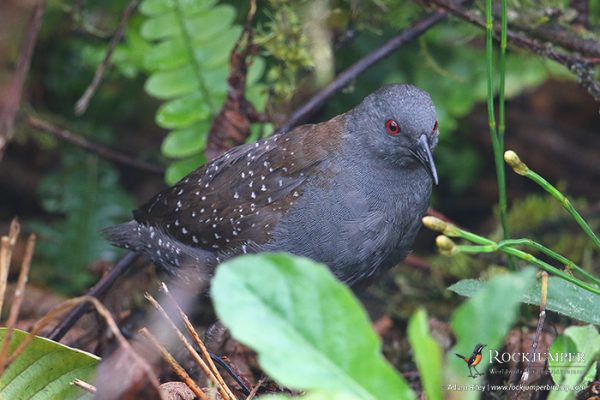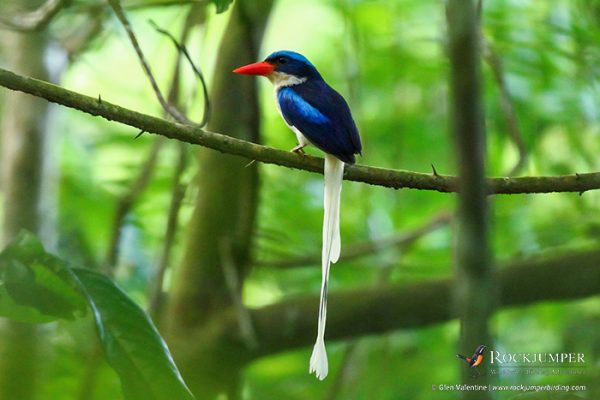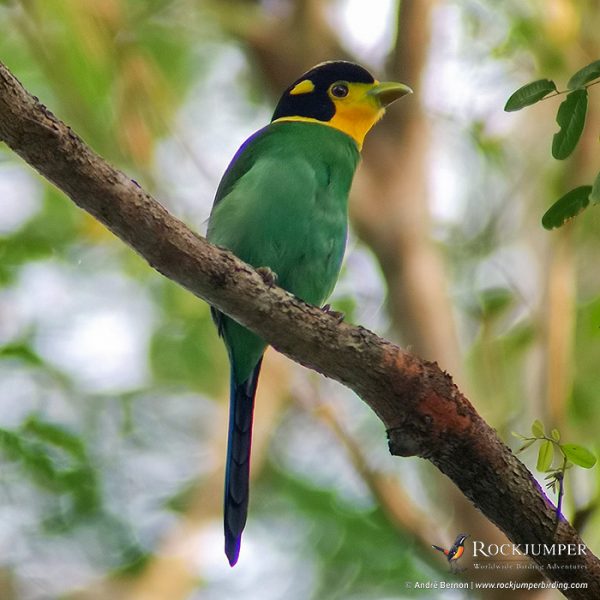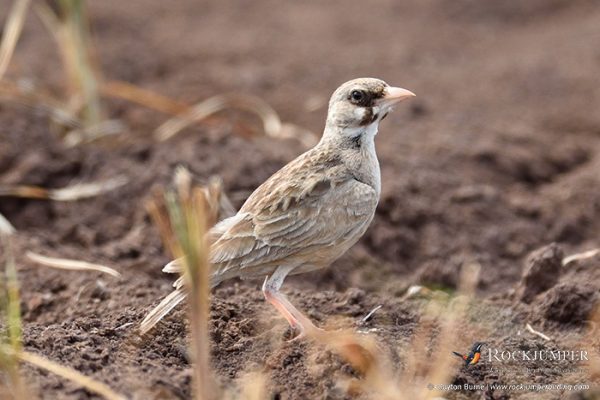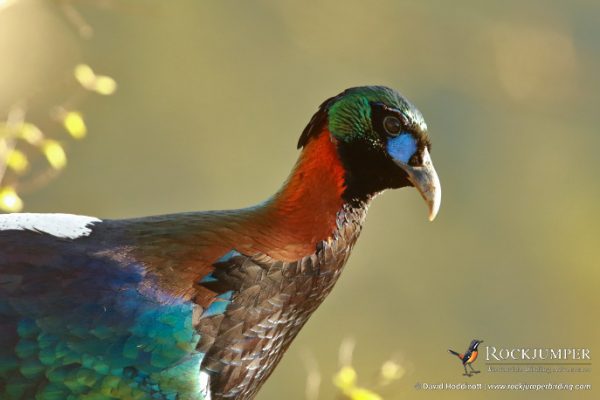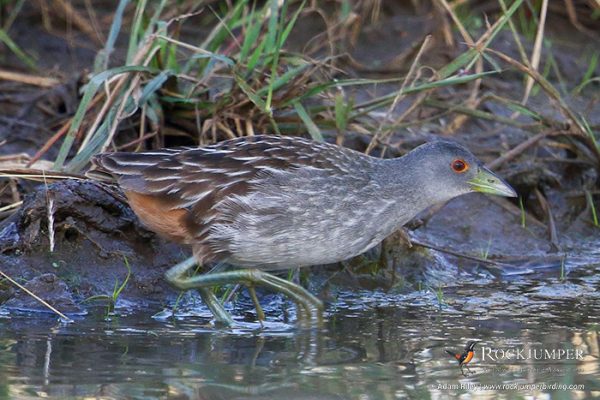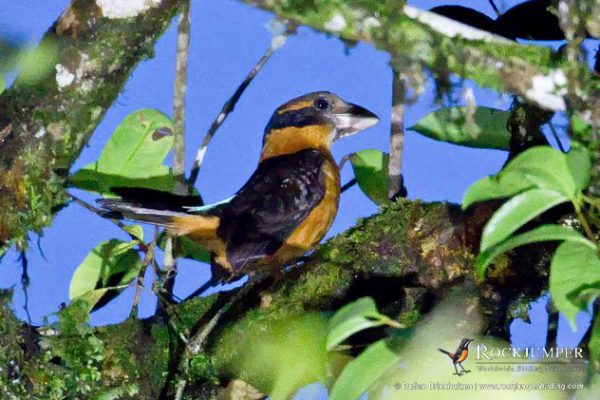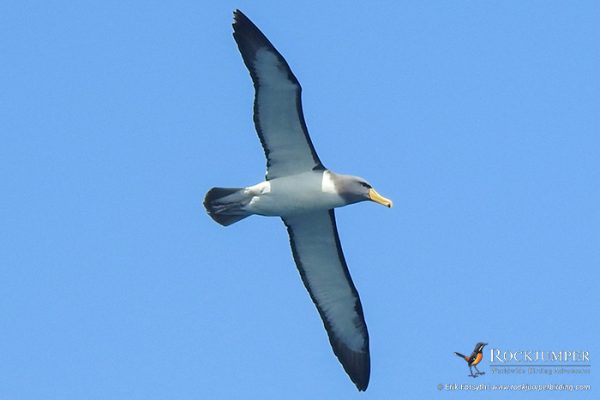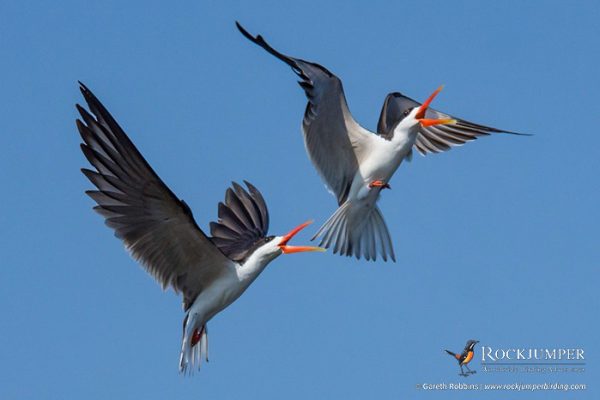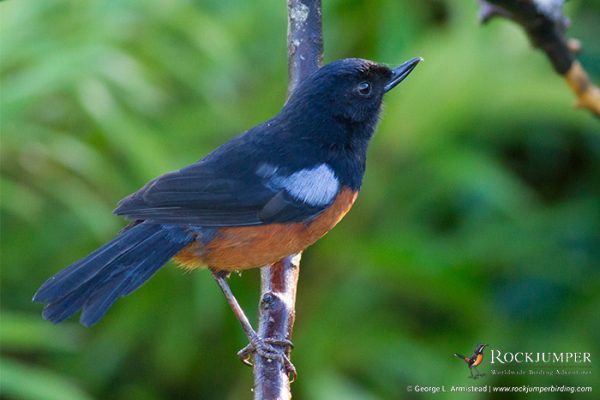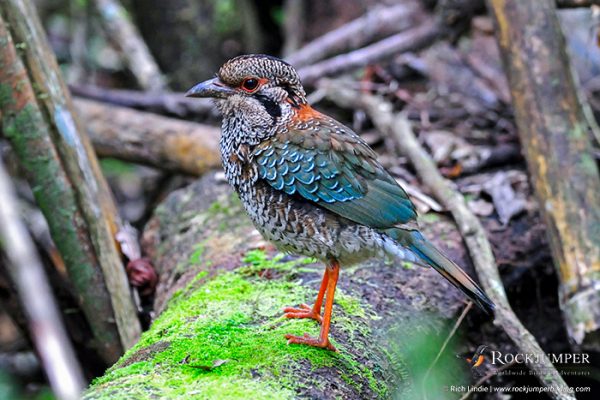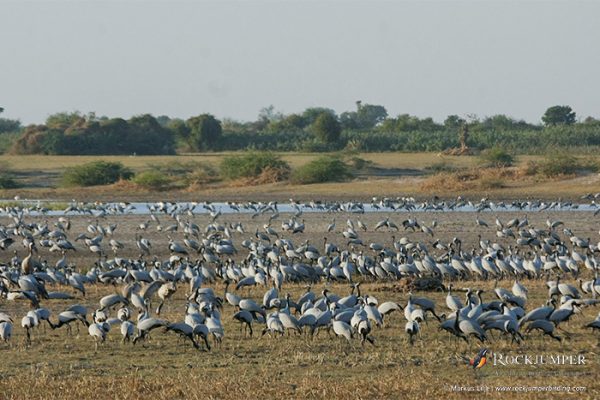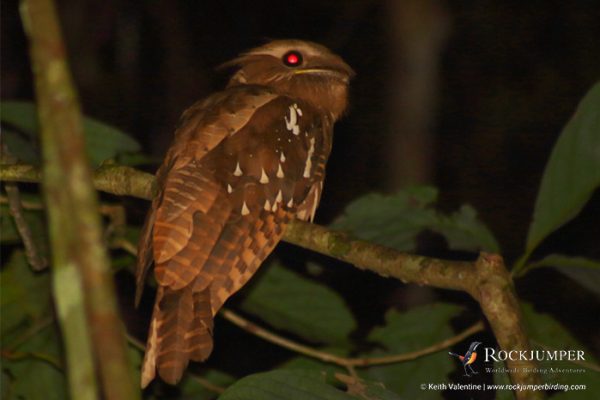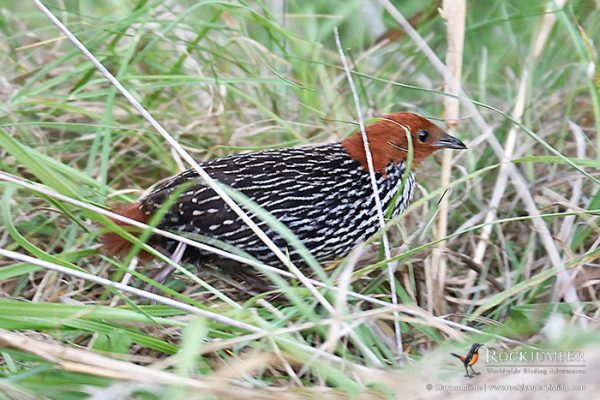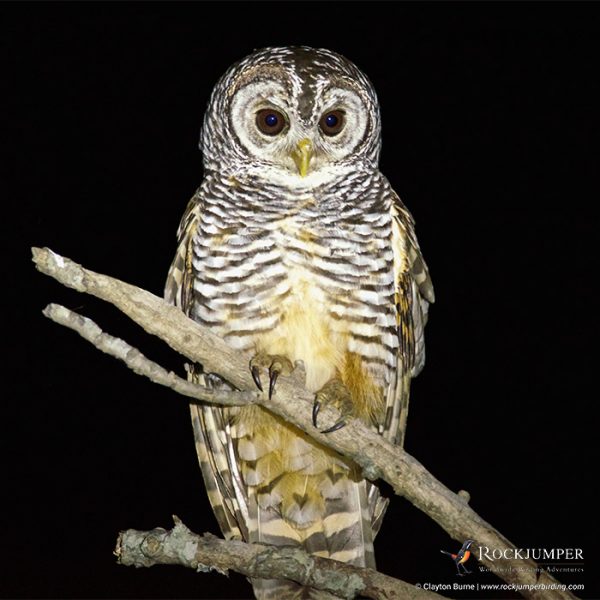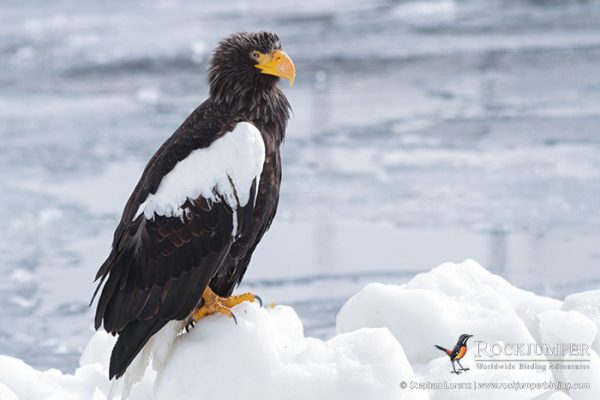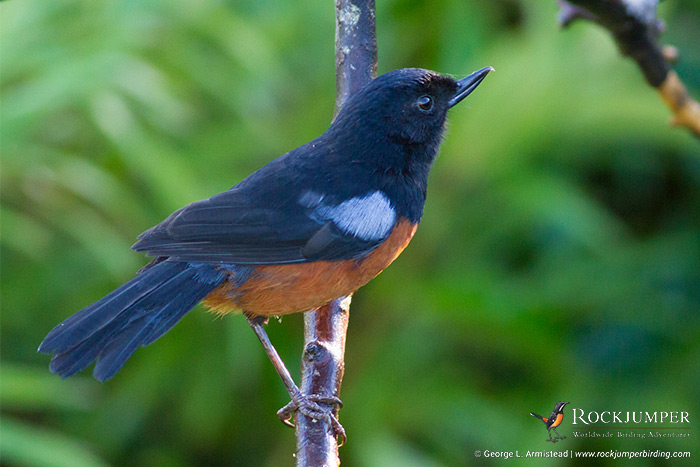
Another great year for birding has flown by, presenting our tour leaders with the difficult task of selecting their top bird out of hundreds and thousands of specials seen in 2018. The rest of us, however, have the pleasure of reading the year’s highlights from our leaders and staff as recorded in their own words.
Adam Riley – Galapagos Rail
I last birded the Galapagos in 2000, and managed to clean up on most of the endemics then; unfortunately, I missed the Galapagos Rail. This tiny rallid is one of the least-known Galapagos endemics, and only occurs at a few higher elevation locations on some of the lusher islands, where it skulks about in dense undergrowth. After 18 years I finally had a chance to return, and getting even with the Galapagos Rail was high on my agenda – dare I even dream of getting a photograph! Our first attempt on Santa Cruz island was a total failure, without a bird even being heard. Next, we headed to Isabella Island with trepidation: Isabella held our best chance for finding the rail, but the mighty Sierra Negra volcano was in the process of erupting, and we didn’t know whether we would be able to access any higher elevation rail habitat. After long discussions with park authorities, we were informed we could bird around the park entrance and no further. Before long, we tracked down a calling pair. The game was afoot! One frustrating hour later, we admitted defeat – these sneaky little birds had run circles around us without showing a single feather…. Not to be outdone, we tried again at another spot, striking gold when a very vocal individual decided it was time to put on a show. We were treated to numerous views, and I will never forget the adrenaline-fuelled moment when I snapped this image and realised my Galapagos dream bird!
Adam Walleyn – Kofiau Paradise Kingfisher
I had been eagerly anticipating the opportunity to guide our West Papua cruise for the whole year. The trip visits so many exotic locales and offers up the chance of seeing a number of the most poorly-known birds in the world. Perhaps the island I was most keenly looking forward to visiting was Kofiau. And the bird there I was most keen on seeing was the Kofiau Paradise Kingfisher. Having spent a great deal of time in the New Guinea region, I have been fortunate to catch up with all the other spectacular species in the genus, but this is the most poorly-known of them all, and one I still desperately needed to see. Thankfully, it didn’t take long to track one down, and it was just one of many great moments on this trip!
Andre Bernon – Long-tailed Broadbill
When I think of Asian birding, pittas and broadbills come to mind. Once you have seen their vibrant colors within the deep green forests, those views are etched into your memory forever. Whilst on tour in Asia this year, I was lucky enough to encounter five broadbill species! Honestly, my bird of the year could go to any one of them, but if I had to choose, the Long-tailed Broadbill wins the prize. While we were exploring Thailand’s Khao Yai National Park, we heard a flock of these large broadbills and were lucky to find them right above our heads. One thankfully posed long enough for this photo. If you haven’t yet, do yourselves a favor and go and experience this awesome family in person.
Clayton Burne – Masked Lark
Rcently, we (Meg, Kaily and I) found ourselves in the middle of a series of remote plains in southern Ethiopia. With all Ethiopian endemics tied up at this point, we had a day dedicated to finding the rarely seen – but very sexy – Masked Lark. It is probably not an uncommon bird, with populations found in northern Kenya and both southern and eastern Ethiopia, but most of the locations where it has been found have suffered from long-term security issues, meaning few birders or ornithologists have spent much time observing the species. Thankfully, southern Ethiopia is perfectly safe – even if the prime birding areas are a bit of a drive to reach. Heart rates spiked every time a likely colored bird flushed from the side of the car, but invariably they ended up being female Chestnut-backed Sparrow-Larks. After 10 minutes without luck, I could feel doubt starting to creep in: ‘Did the habitat look right?’, ‘Were we going about this the right way?’. As I began to fear the possibility of ‘dipping’, a larger pale bird flushed and landed nearby. The big pink bill was immediately more obvious before the bird turned to look at us squarely, flashing a gorgeous black mask and white chin. Ultimately, we found at least a dozen individuals before calling it a day!
Daniel Danckwerts – Chinese Monal
My first year with Rockjumper has been the most amazing whirlwind adventure, taking me through Madagascar, Zambia, Namibia, Botswana, China, the Indian Ocean islands and the Comoros. This has afforded me the opportunity to see such incredible species as the rare Souza’s Shrike, critically endangered Seychelles Paradise Flycatcher, localised Grimwood’s Longclaw, astounding Pitta-like Ground Roller, indescribable Helmet Vanga, and both Lady Amherst’s and Golden Pheasants; a selection of birds I could hardly have imagined seeing within a single calendar year. But above all these was a single stand-out species – the inexplicably rare Chinese Monal. This species is only accessible at a single site, along a high-altitude pass over the Balangshan Mountain in China’s Sichuan province; an essential stop on our tour. We arrived on what seemed like the perfect day, but the birds were nowhere to be found. We returned several times over the course of the next two days but found the alpine meadows engulfed in dense fog. As a last desperate attempt, we visited on a fourth morning. The weather had cleared somewhat, but our spirits were low. After a nervous half an hour, the first monal was spotted silhouetted on the most distant ridge. The weather grew more and more ominous, but we eventually saw a pair much closer to the road. Even at this distance, the male’s iridescence was unlike anything I had seen previously.
Doug McCulloch – Striped Crake
My top sighting for the year must be the Striped Crake. This enigmatic and beautiful little rallid was completely unexpected on the tour I was leading in Uganda. They are strongly tied to ephemerally submerged grassland, and since a primary feature of African savanna ecosystems is variable and unpredictable rainfall, Striped Crakes tend to be highly nomadic. It was therefore really special to find three birds foraging in a small flooded pan just off the road at Lake Mburo. Being small skulkers of dense vegetation, part of their attraction is that they are so difficult to see. Their habitat is also usually difficult or exhausting to access. It was such a treat to be able to spend 20 minutes observing these superb birds, only 15 meters away, from the elevated positions of our land cruisers. Among a year of wonderful bird sightings, this must rank as my most memorable.
Dušan Brinkhuizen – Shovel-billed Kingfisher
Papua New Guinea is probably most famous for its cracking birds-of-paradise, but the country also holds many other amazing birds, including some fantastic kingfishers. Beach and Mountain Kingfishers, Rufous-bellied Kookaburra, Papuan Dwarf Kingfisher and Brown-headed Paradise Kingfisher are among but a few! Without a doubt, though, the “King of the Kingfishers” is the Shovel-billed Kingfisher (Clytoceyx rex). This large and spectacular forest-dweller has a massive bill unlike any other kingfisher; it is also the sole representative of its genus and endemic to New Guinea. Unfortunately for us birders, it is rather difficult to observe because of its retiring nature and crepuscular habits… We visit various corners of the country during our Birding in Paradise tours of Papua New Guinea, including the Tabubil area. This spectacular region harbors many rare species, the Shovel-billed Kingfisher included. At the end of a rather rainy day, we waited at the edge of some primary forest in the hopes of finding it. The magic started soon after dusk, as two pairs began counter-singing nearby! It took us a while before we felt confident enough to start using the spotlight. However, we quickly found one perched on an exposed branch in a tall tree. We quickly got it in the scope, and everybody enjoyed full-frame views of the beauty for several minutes. What an incredible sighting!
Erik Forsyth – Chatham Albatross
My bird of the year has to go to the Chatham Albatross. This species only breeds on Pyramid Island, which is about 3 hours from the Chatham mainland by boat. Getting to this island is hugely reliant on the weather, which is often too wild here to allow for the trip. Sadly, this was the case on our first tour of the year, as our pelagic tour was cancelled on both possible days due to big swells and a howling wind. Fortunately, on our second tour, we managed to get out on the first day as the weather had been great all week. We motored to Pyramid Island in fabulous sunny and calm conditions, the rugged island standing out in contrast to the relatively calm ocean. Soon, we could see Chatham Albatross circling around the higher reaches, and on closer approach there was a large raft of birds on the water. We were ecstatic and privileged to be here, and thoroughly enjoyed our time with this species. Definitely worthy of the bird of the year for me!
Gareth Robbins – African Skimmer
On a few of the tours I have led this year, I have had the misfortune of experiencing quite a bit of heavy rainfall. While always good for the land, it can make birding a challenge. In a few of these cases, heavy rain brought with it raised river levels, which in turn covered the sandbanks and left us no opportunities to see any African Skimmers. Thankfully, in August my luck changed, and I was fortunate enough to find myself with a group in Zimbabwe on an extension to one of our South African tours. During our tour, we spent some time at the Imbabala Zambezi River Lodge, where the water levels were perfect and the sandbanks nicely exposed. We went out on two boat trips here, and on both occasions we were able to spend a great deal of time observing these fascinating birds skimming over the water and putting on a great show for us all. An easy choice as bird of the year for me.
George Armistead – Chestnut-bellied Flowerpiercer
High up in the Cordillera Occidental of Colombia, with expanses of green Choco forest rolling out below us, we marveled at the dawn views as golden sunlight and cottony clouds washed over the jagged ridges. It was cold. You hop the flight from the US and head 6 hours south and think you’ll be swimming in heat and humidity, but here in the high Andes, the dawn air is crisp and cool. As the sun got higher we warmed up, but even before that birds were calling. Finicky Beautiful Jays called in the valley below us, but were determined not to be seen. The critically endangered Munchique Wood Wrens sounded off as well. Only discovered in 2008, there are under 300 pairs thought to exist, and the birding gods smiled upon us, providing lovely views of a pair of these dapper little songsters. Soon after, another super rare and little-known bird appeared, in the form of a hummingbird. A Dusky Starfrontlet, with its smoky black face, brilliant green crown and glittering yellow belly was startling. Here again, with a tiny population estimated at under 300 total individuals – we were seeing one of the world’s rarest birds. Then the star of the show, the smashing Chestnut-bellied Flowerpiercer, rolled up. Between 1965 and 2003, this bird was shrouded in mystery, and seen by no one. Today, it is known from just 5 sites, and we were fortunate to be at this one, and to see 2 other gorgeous and rare species, all while basking in some amazing scenery here in Colombia.
Greg de Klerk – Scaly Ground Roller
A spectacular sunny-skied morning welcomed us into the mid-altitude rainforest on the eastern edge of Madagascar. With the prospect of some great birding ahead, we set about locating our targets. While watching a Madagascar Flufftail, our local guide set about trying to locate a more elusive species. After a short while, he came storming out of the thick vegetation breathlessly. He cut a pathway, made steps and even make-shift rails as he led us deeper into the forest, where the booming territorial call of a Scaly Ground Roller soon met our ears. In anticipation, we set up a good viewing position and waited. It wasn’t too long before a magnificent male arrived in a clearing and allowed us all to get great views. We sat and watched in awe for the next five minutes, as the bird steadily moved to more perches and more pronounced positions before he moved away, leaving us grinning from ear to ear as his eerie call slowly got quieter.
Heinz Ortmann – Demoiselle Crane
This year has been another that has brought me many fond memories whilst on tour. Although I have traveled a bit less than previous years, there have still been many highlights. The stand-out bird for me personally was found in Ethiopia, on the first official Rockjumper trip to Kafta Sheraro National Park in the north-west of the country, near the border of Eritrea. Here, we managed to find Egyptian Plover, Sahel Paradise Whydah, Vieillot’s Barbet, Sudan Golden Sparrow, White-headed Plover and the mega Egyptian Nightjar, amongst many others. The top sighting for me, however, was seeing around 3 000 over-wintering Demoiselle Cranes on the banks of the Tacazze River. This was an amazing spectacle, I had never seen cranes in such numbers before, and it was a lifer to boot. This special part of Ethiopia is rather ‘under-birded’, and who knows what else may pop up in the future as more birders reach this remote part of the Horn of Africa.
Keith Valentine – Large Frogmouth
For me, nocturnal species such as owls, nightjars, potoos, frogmouths etc. are always very special. Seeing birds at night always requires extra effort, and so successful night adventures are always cherished moments. In July, I was fortunate to be leading a tour through the exotic island of Borneo. While down in the Sukau area, we were out birding one evening and got extremely lucky when we heard the distinctive call of a Large Frogmouth – a species that is notoriously very difficult to find, and seems to occur at exceptionally low density throughout its range. Sumatra is probably the best place to try and see the species, but almost anywhere else it is still considered a mega bird and a very lucky sighting. We tried to locate it for a while, but with no luck. Thankfully, it began to call again, and we realised we were rather close. With a little more patience and persistence, we all had some truly extraordinary views of this giant of the frogmouth world. A rare bird and an impressive one to boot, this beauty will be remembered for a long time.
Meg Taylor – Striped Flufftail
Flufftails – a family of birds that are mostly easy to hear, but comfortably one of the more difficult families to see. Having had good views of both Buff-spotted and Red-chested Flufftails, Clayton and I made plans to see the next most feasible species in South Africa – Striped Flufftail. Found mostly in alpine grasslands, the Striped Flufftail as with most other members of the family enjoy inhabiting the densest, darkest recesses available. Challenge accepted…
Hidden away in the remote south-western Drakensberg lowlands is Ntsekeni Nature Reserve. Rarely visited, rugged and staggeringly beautiful, the windswept marsh and grasslands are flanked by towering peaks and hills. Within minutes of arriving, we heard our first Striped Flufftail calling close to our accommodation. Game on! Three days and some nocturnal forays later, our first trip in 2017 had led to the sum total of zero sightings.
In early 2018 we tried again, back to Ntsikeni with more gear, more time and more determination! Afternoon of day 1, fail. Morning of day 2 fail… History was repeating itself, and suddenly 4 days didn’t seem like it would be enough. We tried different cut lines, different speakers, no speakers, different calls – had plenty of responses, but no visuals, not a sniff. As the afternoon of day 2 wore to an end, I hauled out a small boombox-type speaker and suggested we try using it. Clayton didn’t seem overly impressed, but with nothing working – we tried anyway. Clearly, vocal clarity and quality was all important to our little feathered friend, within seconds of the new speaker playing (Clayton hadn’t even returned from putting the speaker down), we had a very close response. A few seconds later, out popped a little red-headed, black and white striped fluffball. Not just for a second, it stood and looked at us, walked around the speaker and then slowly melted away again.
Rich Lindie – Chaco Owl
Having seen over 3,000 birds over the course of the year, choosing one favorite is like whittling down the entire world list to just four favorites! Making it a little easier on myself, I settled on the idea of choosing three of the best birds from my most recent tours, to decide on an overall winner from those. Canebrake Groundcreeper, Chaco Owl and Black-bodied Woodpecker came out on top. Trouble is, I didn’t end up with a photo of the first – despite the incredible views I had – I just simply wasn’t expecting things to turn out the way they did. I did get a great picture of the woodpecker, but I suspect it more than likely made the top three because I know a lot of people who haven’t seen it! The owl therefore wins. As it should. It’s an owl, and we all know how much I love owls. It was made even more special because I managed to gather up all the members of one of my all-time favorite tour groups in time to run outside and see it. On top of this, I saw it during one of the best tours I have ever run.
Stephan Lorenz – Steller’s Sea Eagle
It proved difficult to choose my favorite bird of the year, since there seemed to be too many obvious candidates. Eventually, I decided to pick a species I had been wanting to see for a long time, the magnificent Steller’s Sea Eagle. While the species is neither particularly rare nor difficult to find once one reaches the right spot, the journey to Hokkaido, Japan in February of this year was exciting nevertheless. In addition, we enjoyed spectacular weather as we overlooked the icy harbor, where hundreds of Steller’s Sea and White-tailed Eagles had gathered. This is one of the finest bird spectacles anywhere, and should be on everyone’s bucket list.
